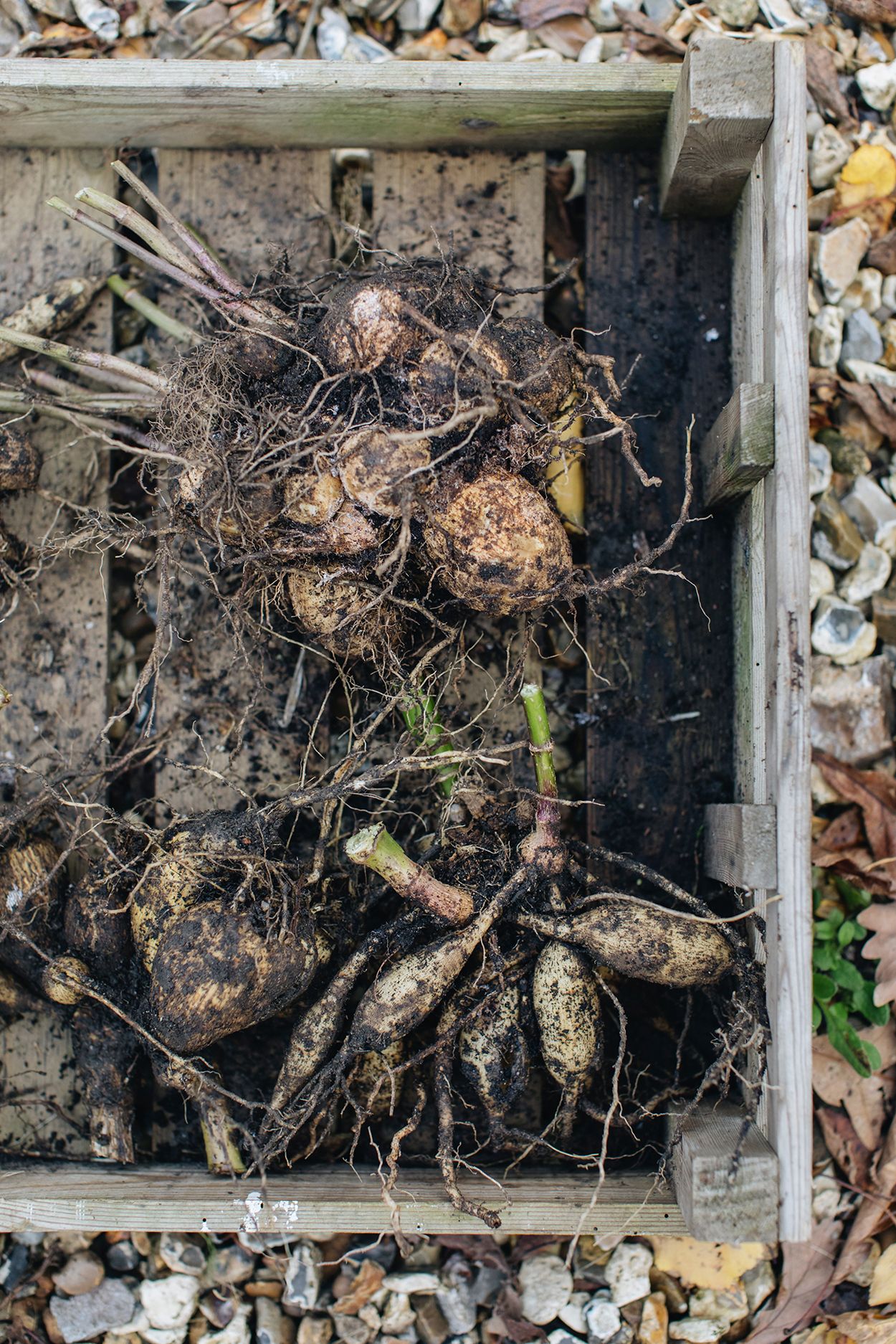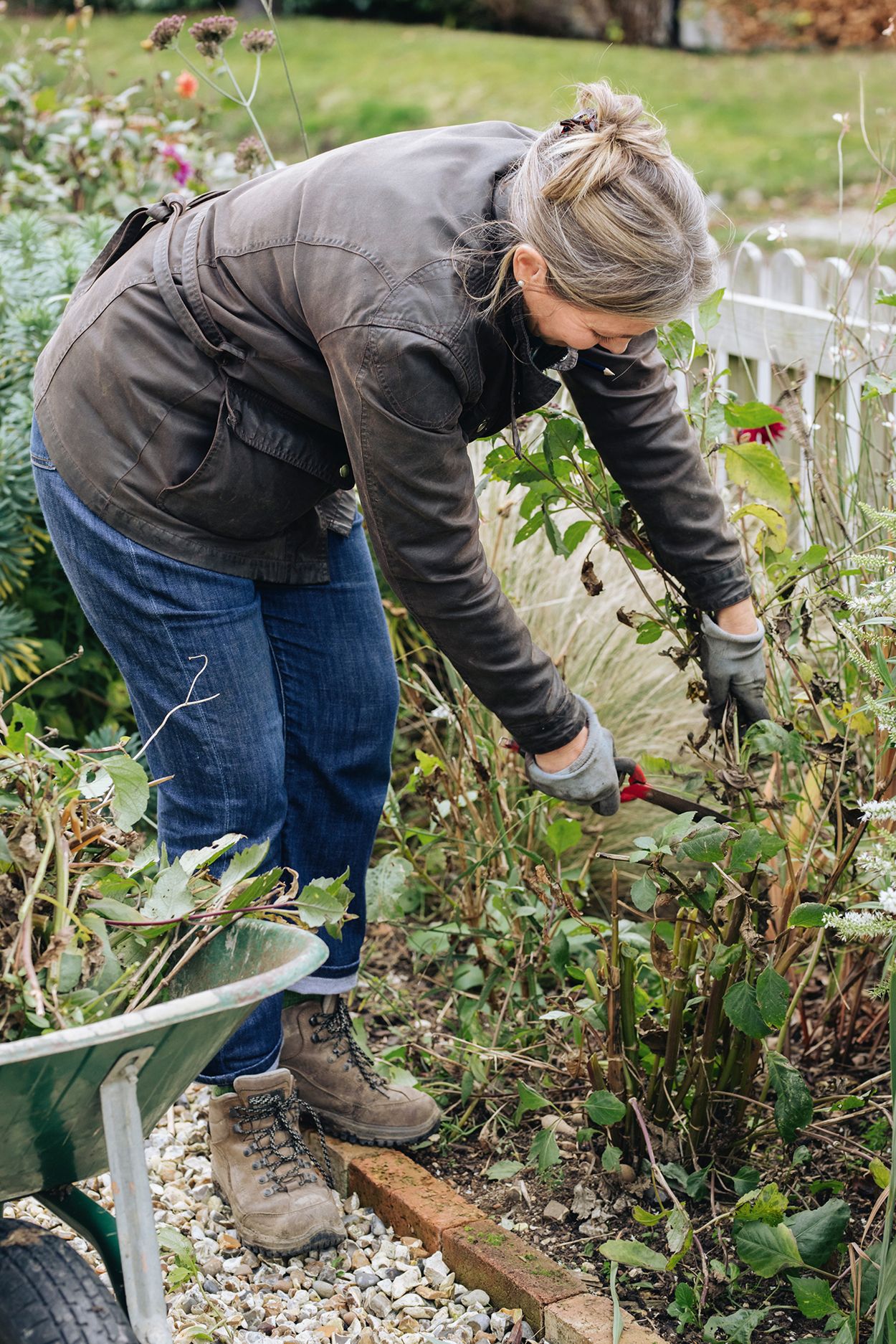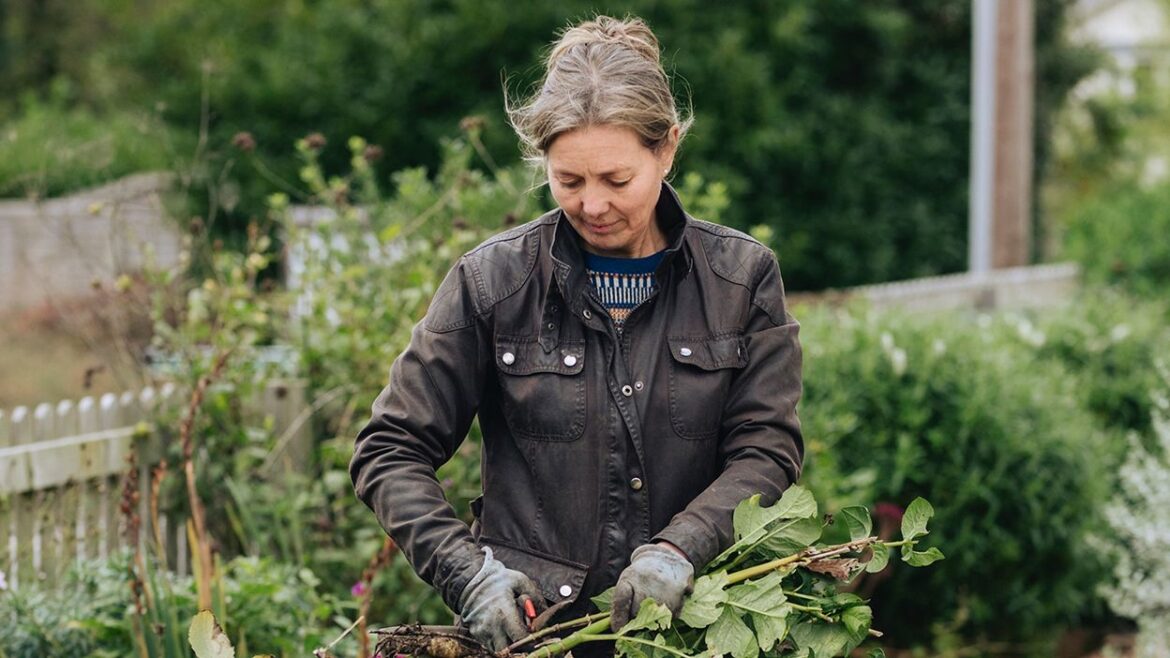
The lifted tubers ready to be washed and left to dry in the greenhouse.
Eva Nemeth
Divide perennials
I have several big clumps of campanulas and phlox that need dividing this year and this is the best time to do it, as long as the ground remains unfrozen. Any early-summer-flowering perennials can be divided now; for later-flowering plants such as asters, it is better to wait until the spring. Over a period of several years, clump-forming perennials often become congested and will be reinvigorated by division. Sometimes, the plant will pull apart easily to make a number of smaller plants. Others can be prised apart using two garden forks back to back, while some form solid roots that need to be separated with a knife.

Cutting back soft-stemmed plants.
Eva Nemeth
Pot up some prepared flowering bulbs for indoor colour and scent during the winter.
Store the pots in a cool, dark place, until new growth emerges from the soil and then move them to a bright window. Hyacinths, amaryllis and narcissus are easy to grow and make a fun rainy-day planting project for children.
Make leaf mould
Put your fallen leaves to good use by turning them into leaf mould. We rake up all the leaves from our oak tree and then pile them into a cubic-metre compost bag, then simply leave them in there to rot down slowly over the course of a year. The leaf mould makes a good mulch, as does my own homemade compost, and I use both to cover my vegetable beds at this time of year, adding a 10cm-deep layer.


Comments are closed.